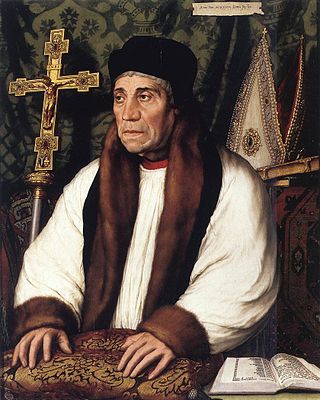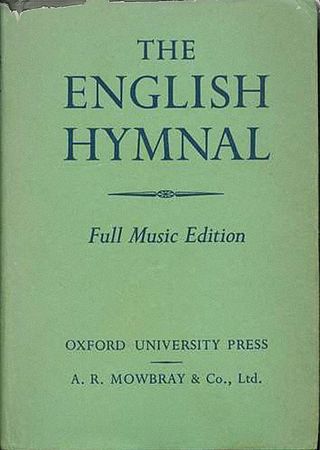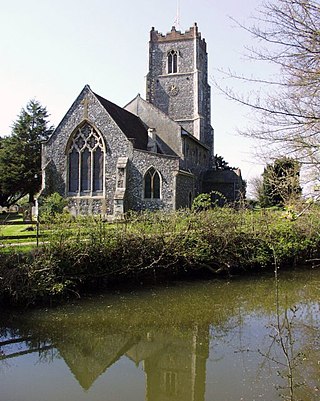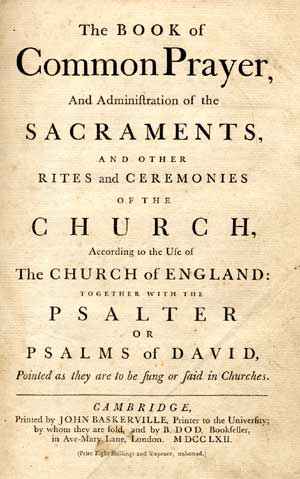The Warham Guild was an Anglican organization of craftsmen and artisans, founded to "augment the studies of the Alcuin Club and the directives of The Parson's Handbook" with "the making of all the 'Ornaments of the Church and of the Ministers thereof' according to the standard of the Ornaments Rubric, and under fair conditions of labour." [1] [2] It was named for William Warham, who served as Archbishop of Canterbury in the period leading up to the break with papal authority. [3]
The guild was founded in London in 1912. It was headed by Percy Dearmer until his death in 1936. [2] After that point the guild became closely associated with AR Mowbray, a business producing church vestments. This business was acquired by ecclesiastic retailer J. Wippell & Co. in 1969, which today owns the guild's vestment patterns. [4] [5]
The guild published a number of works detailing the design of church building and their ornaments, and outlining how the guild approached producing new ornaments and vestments. [6] The guild published their Handbook for the first time in 1932, described as "a condensed and up-to-date version" of The Glossary of Ecclesiastical Ornament by Augustus Pugin. [7] [2] Architectural historian James Bettley noted that it promoted the "Primrose" aesthetic of white church walls and coloured vestments, in contrast to the plainer vestments and brighter walls advocated by Richard Frederick Littledale decades previous. [7]
Extant works by the guild include the altar of St Mary's Church, Badley in Suffolk [8] and several components of the Parish Church of St James the Great, High Wych in Hertfordshire, a Grade II* listed building. [9]

William Warham was the Archbishop of Canterbury from 1503 to his death in 1532.

The humeral veil is one of the liturgical vestments of the Roman Rite, also used in some Anglican and Lutheran churches. It consists of a piece of cloth about 2.75 metres (108 in) long and 90 centimetres (35 in) wide draped over the shoulders and down the front, normally of silk or cloth of gold. At the ends there are sometimes pockets in the back for hands to go into so that the wearer can hold items without touching them with the hands.

A belt without a buckle, especially if a cord or rope, is called a girdle in various contexts, especially historical ones, where girdles were a very common part of everyday clothing from antiquity until perhaps the 15th century, especially for women. Most girdles were practical pieces of costume to hold other pieces in place, but some were loose and essentially for decoration. Among the elite these might include precious metals and jewels.

The Use of Sarum is the liturgical use of the Latin rites developed at Salisbury Cathedral and used from the late eleventh century until the English Reformation. It is largely identical to the Roman Rite, with about ten per cent of its material drawn from other sources. The cathedral's liturgy was widely respected during the late Middle Ages, and churches throughout the British Isles and parts of northwestern Europe adapted its customs for celebrations of the Eucharist and canonical hours. The Sarum Rite has a unique ecumenical position in influencing and being authorized for liturgical use by the Roman Catholic Church, Eastern Orthodox Church, as well as the Anglican Communion.

The English Hymnal is a hymn book which was published in 1906 for the Church of England by Oxford University Press. It was edited by the clergyman and writer Percy Dearmer and the composer and music historian Ralph Vaughan Williams, and was a significant publication in the history of Anglican church music.

The Alcuin Club is an Anglican organization seeking to preserve or restore church ceremony, arrangement, ornament, and practice in an orthodox manner.

Binbrook is a village and civil parish in the East Lindsey district of Lincolnshire, England. It is situated on the B1203 road, and 8 miles (13 km) north-east from Market Rasen.

Percival Dearmer (1867–1936) was an English Anglican priest and liturgist best known as the author of The Parson's Handbook, a liturgical manual for Anglican clergy, and as editor of The English Hymnal. A lifelong socialist, he was an early advocate of the public ministry of women and concerned with social justice. Dearmer, with Ralph Vaughan Williams and Martin Shaw, helped revive and spread traditional and medieval English musical forms. His ideas on patterns of worship have been linked to the Arts and Crafts Movement, while The English Hymnal reflects both folkloric scholarship and Christian Socialism. At his death, he was a canon of Westminster Abbey, where he ran a canteen for the unemployed.

Otley is a village and civil parish in the East Suffolk district, in the English county of Suffolk. It is around 7 miles (11 km) north-east of Ipswich. The parish, which covers an area of about 9 square kilometres (3.5 sq mi), had a population of 676 at the 2011 United Kingdom census. The B1079 road runs through the village, meeting the B1078 to the south of the parish at Otley Green.

The Parson's Handbook is a book by Percy Dearmer, first published in 1899, that was fundamental to the development of liturgy in the Church of England and throughout the Anglican Communion.
The "Ornaments Rubric" is found just before the beginning of Morning Prayer in the Book of Common Prayer of the Church of England. It runs as follows:
"THE Morning and Evening Prayer shall be used in the accustomed Place of the Church, Chapel, or Chancel; except it shall be otherwise determined by the Ordinary of the Place. And the Chancels shalt remain as they have done in times past.
"And here is to be noted, that such Ornaments of the Church, and of the Ministers thereof, at all Times of their Ministration, shall be retained, and be in use, as were in this Church of England, by the Authority of Parliament, in the Second Year of the Reign of King Edward the Sixth."

The Canterbury cap is a square cloth hat with sharp corners. It originated in the Middle Ages, and is commonly found in the Anglican Communion, as well as in the Catholic Church where it is used by Anglican Ordinariate clergy. It is also soft and foldable, "Constructed to fold flat when not in use ..." The Canterbury cap is the medieval biretta, descended from the ancient pileus headcovering. It is sometimes called the "catercap".

Altar candles are candles set on or near altars for religious ceremonies. Various religions have regulations or traditions regarding the number and type of candles used, and when they are lit or extinguished, for example during the liturgies.

St Mary's Church is the civic church of Bury St Edmunds in Suffolk, England and is one of the largest parish churches in England. It claims to have the second longest nave, and the largest West Window of any parish church in the country. It was part of the abbey complex and originally was one of three large churches in the town.
Frank Ernest Howard was an English architect who worked exclusively in the area of ecclesiastical furnishings and fittings.

St Mary's Church is a redundant Anglican church in the village of Badley, Suffolk, England. It is recorded in the National Heritage List for England as a designated Grade I listed building, and is under the care of the Churches Conservation Trust. The church is located some 3 miles (5 km) southeast of Stowmarket on the west side of the B1113 road, and is approached by a track about a mile long.

The Society of SS. Peter and Paul (SSPP) was an English Anglo-Catholic publishing company, sometimes mistakenly thought to have been in the tradition of Anglican Papalism. It was established in 1911 as a reaction to the works of the Anglican priest and liturgist Percy Dearmer, particularly The Parson's Handbook which advocated a liturgical style allegedly distinct to England, and rooted in the Sarum rite.
St Mary and All Saints Church is the parish church of Little Walsingham in the English county of Norfolk. It is dedicated to the Virgin Mary and All Saints. Little Walsingham was the location of the shrine of Our Lady of Walsingham, destroyed at the Dissolution. The Anglican shrine was revived by Alfred Hope Patten, the Vicar of Little Walsingham, in 1922, and the image of Our Lady of Walsingham was in the church until its translation to the new priory in 1931.

The 1662 Book of Common Prayer is an authorised liturgical book of the Church of England and other Anglican bodies around the world. In continuous print and regular use for over 360 years, the 1662 prayer book is the basis for numerous other editions of the Book of Common Prayer and other liturgical texts. Noted for both its devotional and literary quality, the 1662 prayer book has influenced the English language, with its use alongside the King James Version of the Bible contributing to an increase in literacy from the 16th to the 20th century.